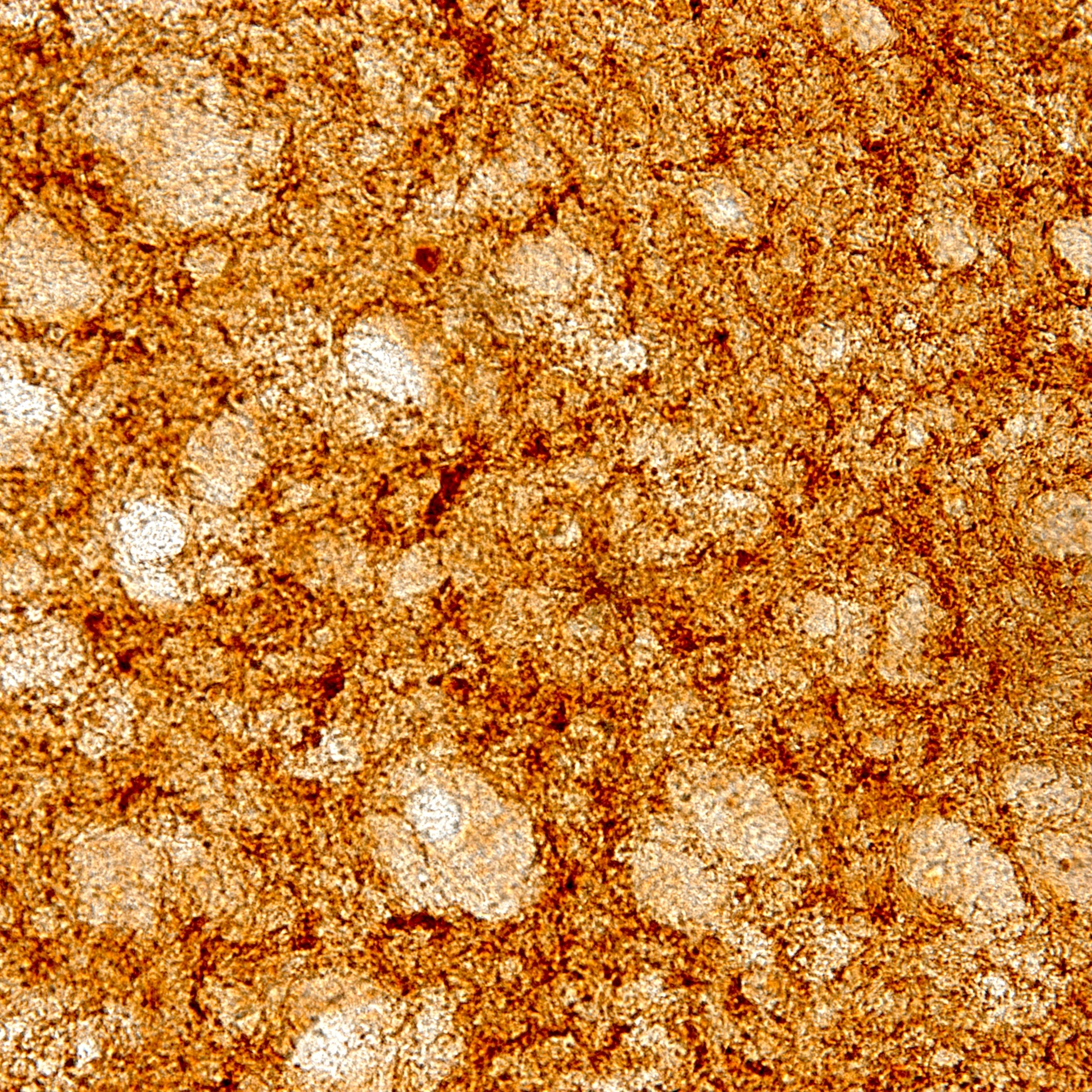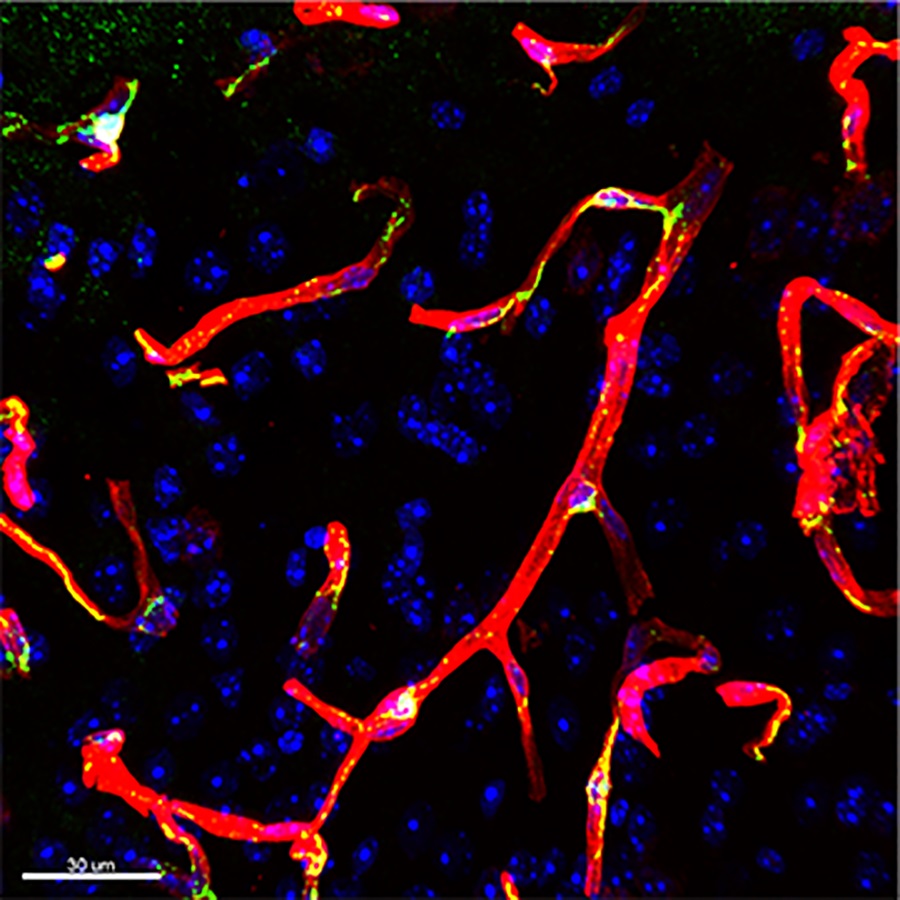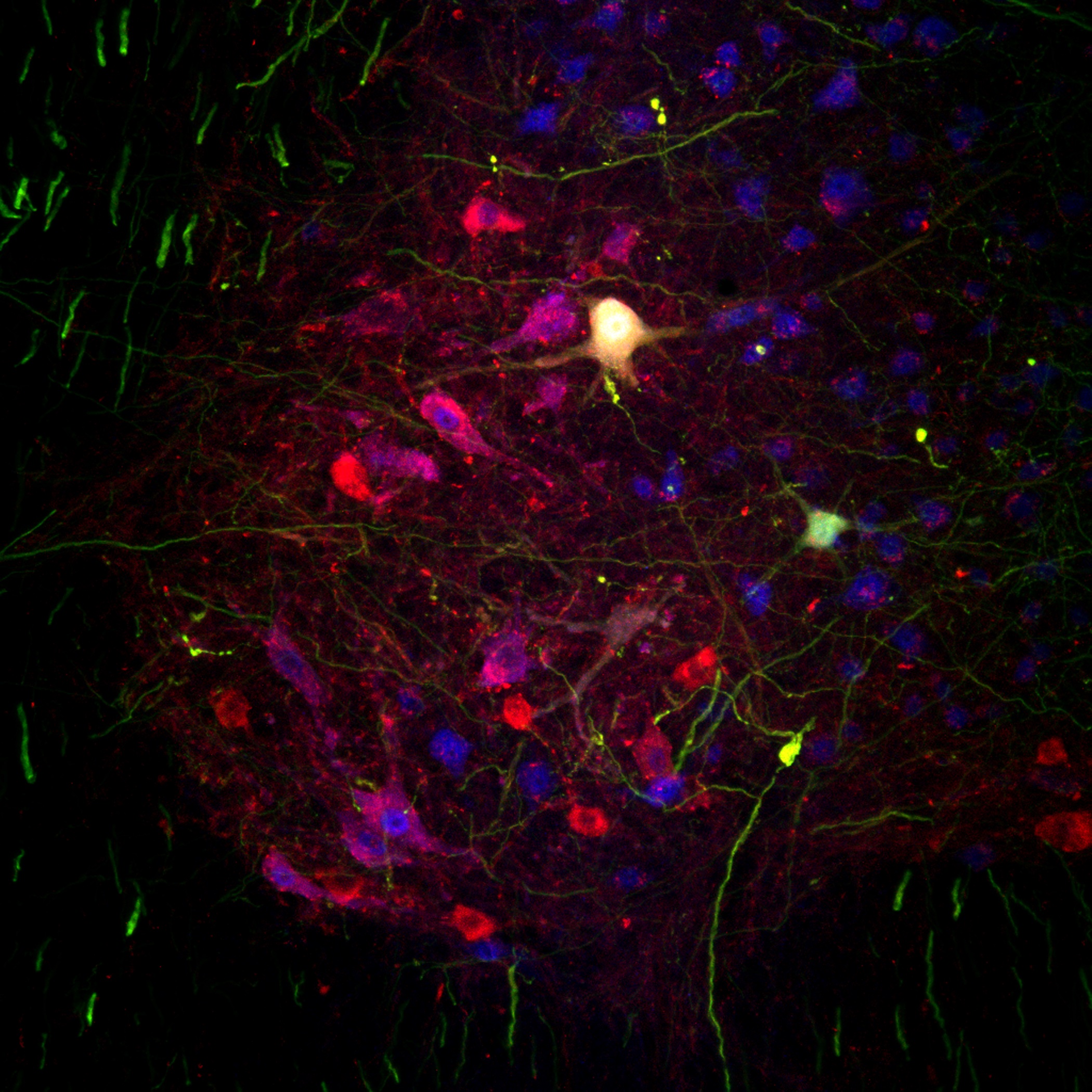Disorders of the Nervous System
Striatal Neurons of a Parkinson’s disease model
An image of cortical neurons in the mouse model of Alzheimer’s disease.
Authors highlight a deficit in motor skill consolidation-dependent synaptic plasticity at motor cortex to dorsal striatum synapses that represents an early biomarker for Huntington’s Disease in mice.
Reginald Cannady and Sudarat Nimitvilai-Roberts tell the story about their co-first author paper about time-dependent changes in cellular excitability of neurons in the prefrontal cortex following chronic voluntary ethanol drinking in mice.
Authors demonstrate that epidermal growth factor receptor antagonism not only blocks morphine tolerance but also restores the effectiveness of opioids against neuropathic pain.
An image of blood vessels in a region of the parietal cortex of a mouse with laminin, pericytes, and cell nuclei visible.
Motor Neurons in the ventral horn of the spinal cord of an ALS mouse model.
Authors demonstrate that long-distance axon regeneration can drive recovery of respiratory function following cervical spinal cord injury in rats.
Munjal Acharya and Charles Limoli discuss new concerns that radiation-induced neurocognitive risks could comprise astronaut safety during NASA’s intended mission to Mars.
Authors show that key features of the microglial activation pattern observed after status epilepticus may not be related to the epileptogenic process.
FOLLOW US
TAGS
CATEGORIES








 RSS Feed
RSS Feed




